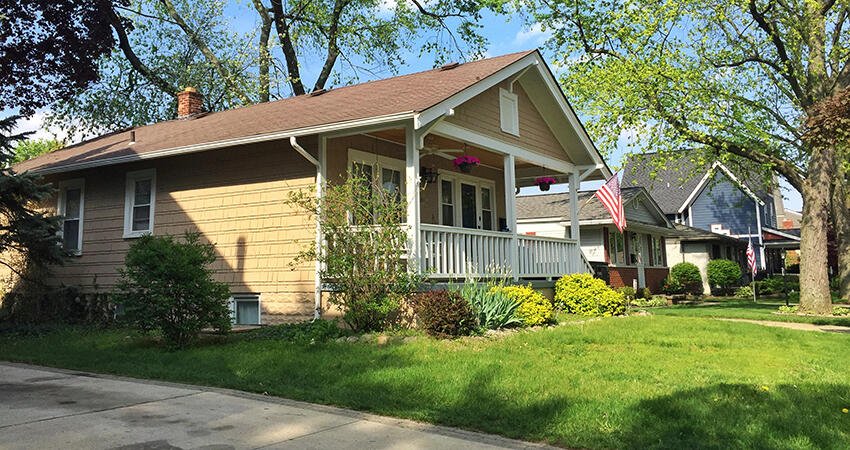
(Rungtiwa P/Shutterstock)
Explicitly Acknowledging Racism Is Key to Reducing Racial Housing and Wealth Gaps
- Title:
-
Race-neutral vs race-conscious: Using algorithmic methods to evaluate the reparative potential of housing programs
- Author:
-
Wonyoung So, Catherine D’Ignazio
- Source:
- Publication Date:
-
2023
The racial wealth gap between Black and white people in the US is large and persistent. The latest data from the Survey of Consumer Finances shows the average white family had six times as much wealth as the average Black family.
This racial wealth gap stems from centuries of outright discrimination, from slavery, to segregation, to redlining. Throughout the later 20th century, policies like the 1968 Fair Housing Act and the 1974 Equal Credit Opportunity Act outlawed explicit racism in policy and practice. Yet, despite the role of race in creating the wealth gap, recent policy is explicitly race neutral, meaning race should never be an input in the design of law and policy, and policies and institutions cannot target racial groups, even when those groups themselves are clearly in need of targeting to make up for decades of discrimination. However, because of historical discrimination, race remains a direct input to outcomes and opportunity today despite facially race-neutral ideologies.
This study aims to uncover whether race-neutral or race-conscious programs are more effective at closing the racial wealth gap. To answer this question, the authors use special purpose credit programs (SPCPs), programs allowed under the Equal Credit Opportunity Act designed to expand access to credit to historically marginalized groups of people.
The authors evaluate the potential impact of race-conscious and race-neutral lending programs on the racial wealth gap. They focus on four types of SPCPs:
- Race-neutral, place-based programs, which target low-to-moderate income neighborhoods
- Race-neutral, people-based programs, which target low-to-moderate income people
- Race-conscious, place-based programs, which target neighborhoods made up predominantly of people of color
- Race-conscious, people-based programs, which target people from certain racial or ethnic groups
For each of these theoretical programs, the authors examine potential contributions to gains in home assets and, as a result, how much a given program would contribute to the reduction of the Black-white wealth gap.
The authors use Home Mortgage Disclosure Act data from 2018 to 2021 on first-lien, home-purchase, nonbusiness applications and data from the 2019 Survey of Consumer Finances. For each type of program, they estimate the number of denied borrowers who could get accepted under the SPCP, then calculate the housing asset gain ratio by race, and then infer the change in the housing asset gap and overall racial wealth gap as a result.
Their analysis uses algorithmic methods. They use a tree-based machine learning model, a gradient-boosting algorithm, as opposed to a linear model, like a logistic regression, to capture nonlinear associations and mitigate overfitting concerns. They predicted outcomes and classified them into three groups: accepted with a prime loan, accepted with a subprime loan (with an interest rate 1.5 percentage points or more than the average prime offer rate), or denied.
Although there hasn’t been a formal evaluation of existing SPCPs, the authors note that SPCPs were created to address racial inequities specifically, but many of them are likely contributing significantly to white wealth. In other words, race-neutral SPCPs are addressing injustices like class inequality or poverty rather than racial inequalities in the housing market. This study shows SPCPs’ potential to serve as a form of housing reparations and contribute to the reduction of the racial wealth gap—but only in certain forms.
Key findings
- Race-conscious SPCPs contribute more toward Black households’ accumulation of housing assets than race-neutral SPCPs.
- On average, race-conscious, people-based SPCPs reduce the Black-white housing asset gap by about 2.1 times as much as race-neutral, people-based SPCPs and 3.3 times more than race-conscious, people-based SPCPs and race-neutral, place-based SPCPs.
- Except for race-conscious, people based SPCPs, under all programs, white households also gained housing assets, which hinders the closure of the racial housing wealth gap. As the authors write, “only the race-conscious, people-based SPCPs would be truly reparative lending programs.”
Policy implications
- The authors posit that the 2023 revisions to the Community Reinvestment Act (CRA), which encourage investments on race-neutral terms, will not close the racial wealth and housing asset gaps because race-neutral investments like SPCPs grow white wealth—sometimes at higher rates than Black wealth. The authors note that the CRA could incentivize actions that would close the racial wealth gap.
- These findings highlight how race-neutral policies and practices are not truly neutral, given centuries of historical discrimination and racism. The authors write that their work “empirically quantifies how the implementation of colorblind, race-neutral programs serves to maintain the status quo of white supremacy, even when those policies are nominally aimed at addressing long standing racial inequalities.”
- The authors also highlight the importance of support for race-conscious programs from the government-sponsored enterprises (GSEs). Given that loan approval hinges significantly on the GSEs’ underwriting judgements, support for these race-conscious programs could improve uptake and design by lenders, particularly in today’s uncertain housing market.
- Finally, the authors note the anxiety around potential legal challenges to race-conscious SPCPs, particularly following the US Supreme Court decision around affirmative action in college admissions. In response to this, they note the importance of improving public discourse on the rationale of race-conscious and reparative programs. They write that such programs “are not handouts for special interest groups. Rather, they are a form of institutional truth-telling about past harms, and an institutional commitment to engage in rectification.”


